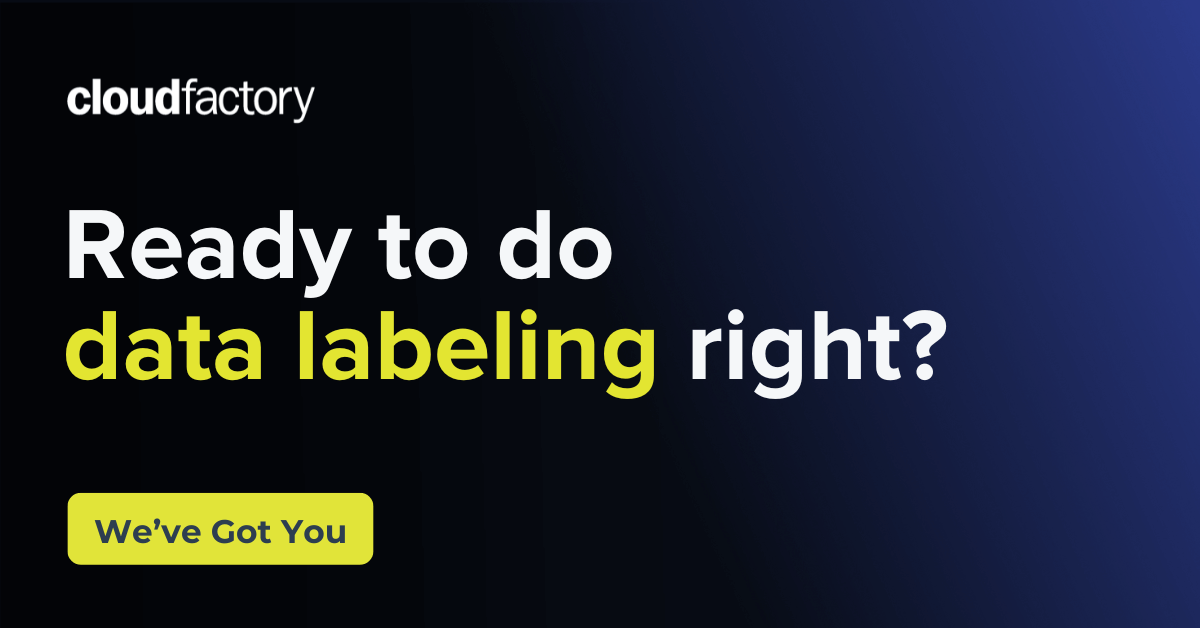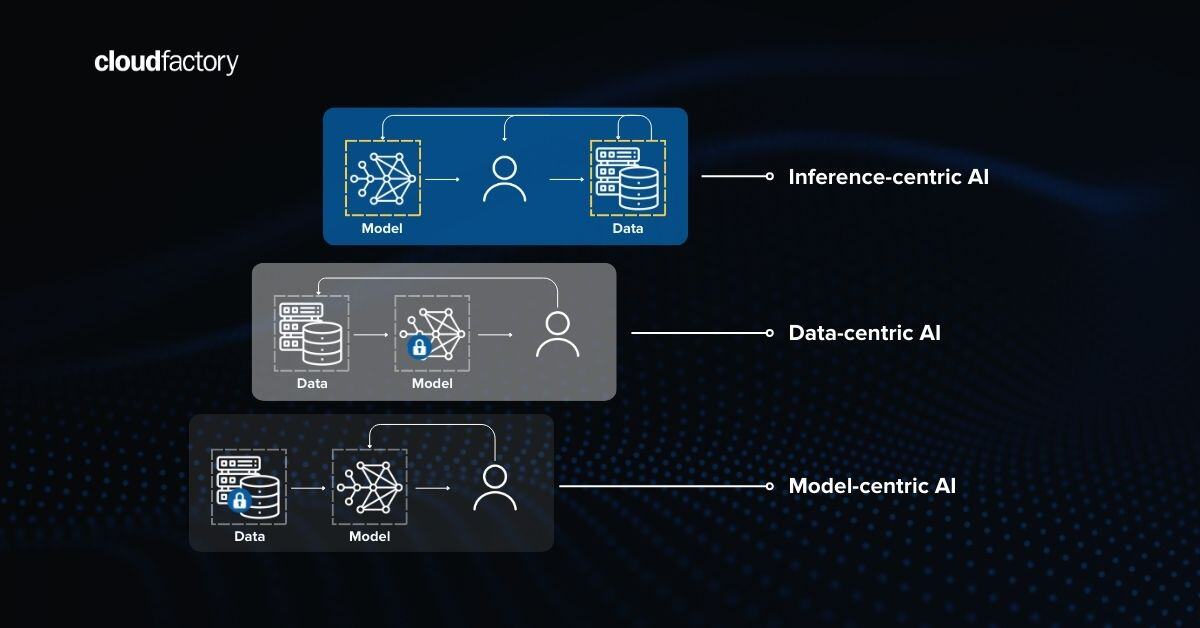Feeling let down by the constant hype around AI? Frustrated by the pressure to deliver results while facing high failure rates?
Surveys reveal a harsh reality among business leaders: over 80% of AI projects fail, and 88% of tech executives struggle to see value in their investments.
But there's good news!
This blog post unveils five practical strategies to navigate challenges, avoid disappointment, and achieve success using an AI data platform designed to leverage technology and people and help you inch closer to higher ROI's and faster time to market.
- Remain realistic about AI development
- Build the best ML models with high-quality data
- Humans need to be part of your strategy
- Plan for high-performing results for your ML models in production
- Ask the right questions upfront
1. Remain realistic about AI development
Set realistic expectations about what AI can and can't do for your company. Discuss the limitations of your current AI technologies and highlight areas where they are ready to augment human expertise. What are your current capabilities, like automating specific tasks or improving data analysis?
Don't expect AI to revolutionize your entire business overnight. Instead, focus on achieving smaller, achievable goals that demonstrate its value and pave the way for further advancements. Celebrate these successes and use them to build momentum and maintain focus.
2. Build the best ML models with high-quality data
AI systems are only as good as the data they are trained on. Poor quality, biased, or insufficient data can lead to inaccurate or unfair AI outcomes. Leaders should invest in robust data management practices, ensuring data is accurate, comprehensive, and representative. This includes regular audits of data quality and bias and implementing processes for continuous data improvement.
As data volumes and project intricacies rise, managing risk becomes harder and harder. Don't let overwhelming data needs stall innovation. Freeing your team from the data burden through a trusted outsourcing partner unlocks a wealth of benefits. You will save valuable time and resources, and your team can refocus on their core strength: driving innovation.
You already know that the old saying holds when it comes to ML models: Garbage in, garbage out.
AI algorithms rely heavily on the quality of the data they're trained on. Ensure your data is clean, accurate, and relevant to the problem you're trying to solve. Investing in data quality early on will save you time and frustration later. Low-quality data can backfire and ultimately jeopardize the effectiveness and quality of the models you put into production.
Keep in mind that accuracy and quality are two different things.
Accuracy in data labeling
Accuracy measures how close the labeling is to ground truth or how well the labeled features in the data are consistent with real-world conditions. This is true whether you’re building computer vision models (e.g., doing semantic segmentation or putting bounding boxes around objects on street scenes) or natural language processing (NLP) models (e.g., classifying text for social sentiment), or even generative AI models (e.g., generating images).
Quality in data labeling
Quality in data labeling goes beyond just individual label accuracy. It encompasses a broader set of characteristics that ensure the overall consistency, reliability, and usefulness of the labeled data for training machine learning models. Does all your data labelers' work look the same? Is labeling consistently accurate across your datasets? This is relevant whether you have 29, 89, or 999 data annotators working simultaneously.
3. Humans need to be part of your strategy
Humans in the loop will always play a pivotal role in annotating custom datasets and providing continuous human oversight in computer vision production. AI shouldn't replace human expertise but rather augment it. Focus on how AI can assist your employees, freeing them up for more strategic tasks.
Human involvement is crucial in computer vision tasks, particularly during data annotation. Their expertise ensures accurate labeling and comprehension, especially in complex situations where automated models fall short.
For instance, recognizing subtle details like road cracks requires human intervention. Specialized tools empower humans to address these intricate nuances, refining annotations and ultimately improving the accuracy and effectiveness of AI systems.
Beyond model training, humans remain vital in supervising deployed computer vision models. This oversight ensures intended behavior and identifies potential biases caused by data or model drift.
In scenarios like flood detection, where unexpected environmental changes occur, human judgment can readily adapt, unlike rigid algorithms. This active involvement fosters trust in AI by guaranteeing prompt intervention when errors or unforeseen challenges arise, crucial for applications with high-risk factors.
4. Plan for high-performing results for your ML models in production
If you're lucky enough to have a model in production, your strategy needs to include a plan for resolving low-confidence inferences and edge cases in near real-time for production workflows.
While AI products are trained for diverse situations, the real world throws curveballs. Farm fields, warehouses, sidewalks, or roadways – these environments are inherently unpredictable.
And training for every possible scenario isn't feasible.
Even the most advanced AI systems struggle with the unexpected. They lack the cognitive ability to reason through these novel situations.
These edge cases expose a critical gap in AI's capabilities, jeopardizing product viability, reliability, scalability, and safety. Edge cases will most likely pop up; they offer an opportunity to improve model performance to successfully deploy and scale.
Without a solution for overcoming edge cases, AI products struggle to survive in the real world.
Partner with an AI solutions company that integrates cutting-edge technology and human expertise. Resolve edge cases, false positives, and real-world anomalies in near real-time, ensuring your AI consistently delivers peak performance in production.
5. Ask the right questions upfront
Here are some valuable questions to consider when evaluating AI data platforms to avoid disappointment. These questions offer a framework for critical thinking and assessing the suitability of AI for specific applications.
Which companies offer the best labeling service for computer vision?
When evaluating a vendor offering data labeling services for computer vision, look for a provider with a strong track record in accuracy, scalability, domain expertise, and the ability to customize labeling workflows to meet your specific requirements.
CloudFactory integrates people, processes, and technology to build an efficient lifecycle for training data by putting humans in the loop. CloudFactory data annotators are vetted, managed teams pre-trained on tools and use cases specific to your computer vision needs.
How should I label image data for machine learning?
Labeling images to train machine learning models is a critical step in supervised learning. You can use different approaches, but the people who label the data must be extremely attentive and knowledgeable on specific business rules because each mistake or inaccuracy will negatively affect dataset quality and the overall performance of your predictive model.
To achieve high accuracy without distracting internal team members from more important tasks, you should leverage a trusted partner to provide vetted and experienced data labelers trained on your specific business requirements and invested in your desired outcomes.
How can we get training data?
The training dataset you use for your machine learning model will directly impact the quality of your predictive model, so it's extremely important that you use a dataset applicable to your AI initiative and labeled with your specific business requirements in mind.
While you could leverage one of the many open-source datasets available, your results will be biased toward the requirements used to label that data and the quality of the people labeling it.
To get the best results, you should gather a dataset aligned with your business needs and work with a trusted partner who can provide a vetted and scalable team trained on your specific business requirements.
How CloudFactory can help you avoid AI disappointment
Despite the hype surrounding AI, many businesses struggle to achieve success due to unrealistic expectations, poor data quality, and neglecting the crucial role of human expertise.
CloudFactory offers a comprehensive AI-powered solution that addresses these challenges and helps you achieve your AI goals. Its novel approach to integrating people and technology empowers you to overcome the common pitfalls of AI implementation and achieve success.









